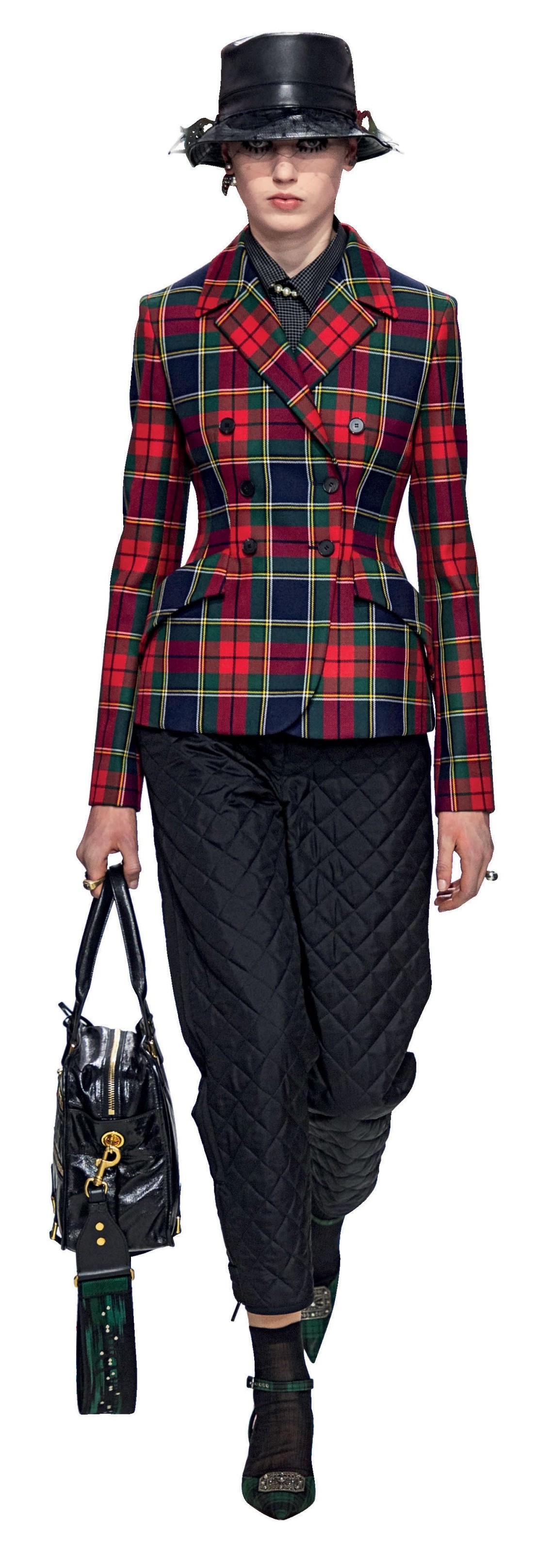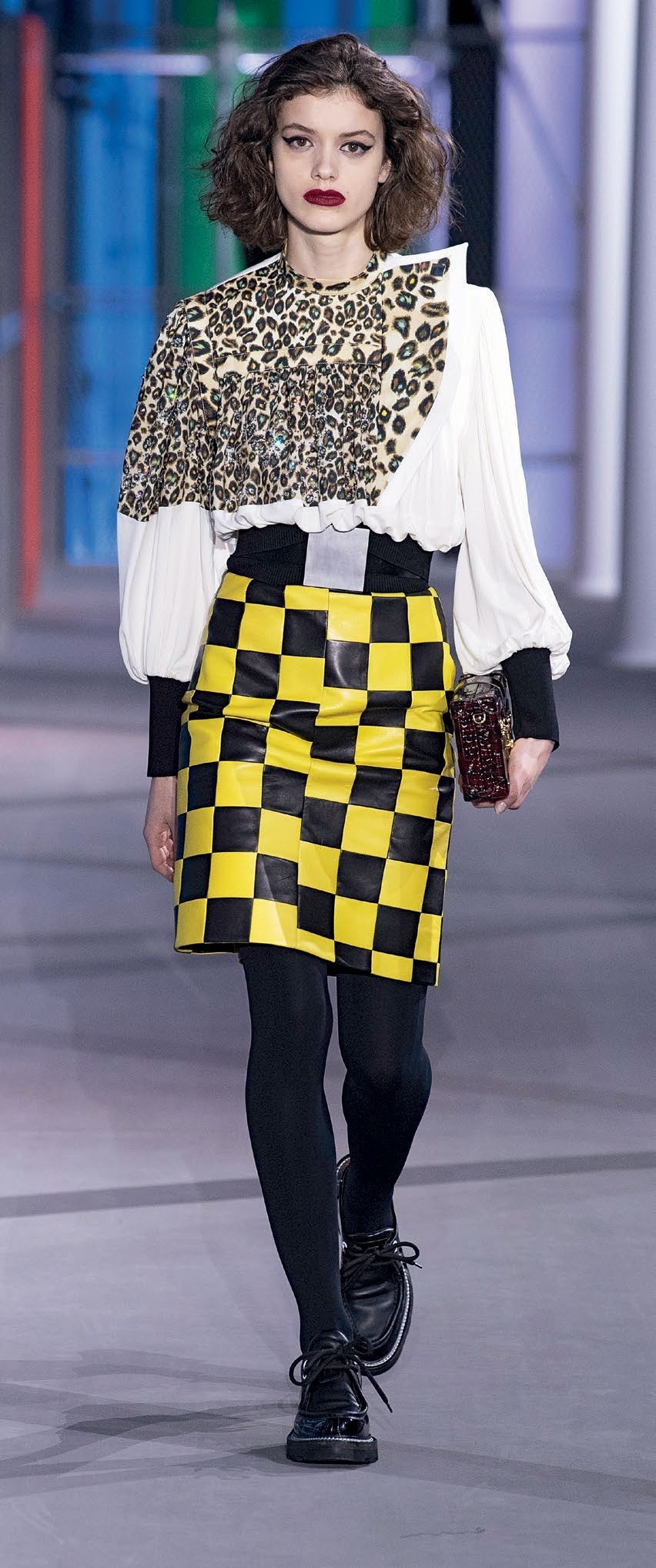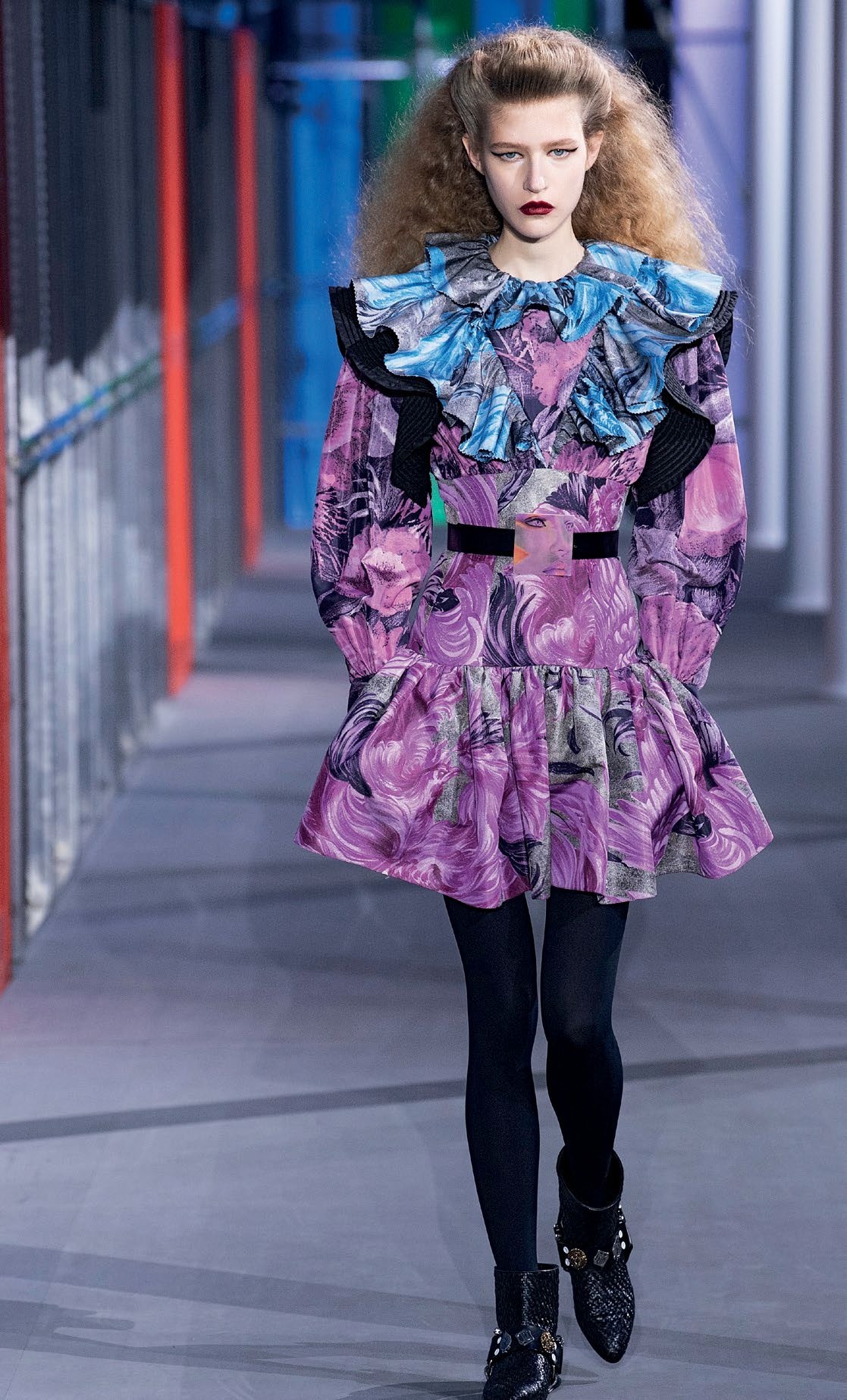The nostalgia gripping fashion today offers some insights into what the zeitgeist craves and desires.


Fashion’s in flux—everything from the past is back in style, and with a vengeance. The runways used to be clear: This is the season of bohemian hippies from the ’70s, gleeful disco from the ’80s, waifish grunge of the ’90s, etc. Since we’ve hit the noughties, that line has blurred. Perhaps a dash of Hollywood/LA/Paris Hilton-esque vibe from 2000 to 2010? The last decade has seen the rise and rise of the hypebeast-meets-athleisure movement, as sportswear becomes designer wear, with logos having a major resurgence. But as a rule, more and more designers are drawing freely from the decades past— combining retro signifiers for a new chimeric look.
Within all this nostalgia, however, are four distinct stylistic trains of thought—glamour, exuberance, escape and order—that encapsulate the zeitgeist’s desire for a little bit of everything at once.


"PACO RABANNE"
Something that stood out strongly this season was the return of exuberant glamour. Inundated as we are with athleisure and streetwear, it was just a matter of time before the notion of dressing up made a comeback. At Marc Jacobs, the collection centred on the designer’s more-is-more approach. The looks were all designed around the models wearing them, in what Jacobs called “an exaggeration of our view of who each woman is”, and the silhouettes were grand and fanciful, in homage to the greats: Fifties cocoon coats a la Cristobal Balenciaga; full-skirted looks inspired by Christian Dior’s 1947 New Look. There were references to Jacobs’ own history too, in full-feathered night-time glamour dresses and an acid green slip from Jacobs’ infamous grunge collection for Perry Ellis in the ’90s.
This search for glamour was also on the mind of Julien Dossena at Paco Rabanne. The collection referenced 1940s Hollywood screen sirens with its lustrous silk-satin dresses; the animal print bravado of the 1980s; sinuous 1930s cocktail dresses; Art Deco palm tree motifs. Peppered throughout were, of course, iterations of the House’s signature chain mail. It was interesting that Dossena’s visual slant for the collection strayed from Rabanne’s space-age vision. But the sum of this collection’s many parts had that same futurist spirit in hunting for a new glamour.

MICHAEL KORS COLLECTION

MICHAEL KORS COLLECTION

MICHAEL KORS COLLECTION

DRIES VAN NOTEN

CHLOÉ

"DRIES VAN NOTEN"
IN SEARCH OF ROMANCE
Looking to the past can draw up feelings of longing, which seemed to be the case with Michael Kors’ ode to Studio 54. The legendary New York City nightclub of the ’70s, where the worlds of art, fashion and music came together in revelry, had its mix of characters reflected in the outfits Kors presented—from the bell bottoms and floral prints of post-Woodstock hippies, to the sequins and feathers of glamorous disco divas. Kors wanted the collection to embody the romantic, joyful sense of people “having fun and embracing glamour and style”.
For Dries Van Noten, mid-century haute couture remains a rich well of inspiration and reference. The designer’s work, for all its loving print, colour and variety of fabric, is often kept grounded by silhouettes from the ’50s that lend a sense of sophistication. Van Noten’s romance this season was a nuanced one, inspired by the natural beauty of flowers—picked from his own garden and photographed as prints—and their imperfections. The result was a modern dark romance that, when paired with his classical shapes, had a contemporary edge.
The question of past versus present was at hand too at Chloé, the brand that the late Karl Lagerfeld had designed for in the ’60s and ’70s. Lagerfeld had all but defined the brand as we know it, imbuing Chloé with the archetypal louche, bohemian-bourgeois spirit. The brand’s current Creative Director, Natacha Ramsay-Levi, honoured that history with a collection that furthered Lagerfeld’s aesthetic blueprint and legacy, updating those boho tropes with sharper cuts that felt more in tune with the style of today’s urban free spirits.

CELINE BY HEDI SLIMANE

CELINE BY HEDI SLIMANE

CHANEL

"CHANEL"
CHARACTER COSTUMES
Perhaps the most literal instances of nostalgia were the collections that summoned very specific times, characters and narratives. Costume, almost, in the way these complete visions conjure immediate associations. Hedi Slimane, in an abrupt turn from his CELINE debut, channelled all-out ’70s petit-bourgeois chic. The collection traded in tiny sparkly dresses for earthier classics such as country tweeds, cut into sports jackets or full skirts. Dresses went below the knees, and horsebit details gave the collection a vintage equestrian vibe. It all had a sense of collegiate chic, like a student at La Sorbonne in the ’70s. Slimane’s genius might just be picking out this particular strain of French girl chic and making it feel perfectly desirable for now.
Chanel’s collection—Karl Lagerfeld’s last—was perhaps most unintentionally nostalgic. Lagerfeld was notoriously unsentimental and loathed to reminisce, but this collection, with its allusions to the old-world sophistication of ski resorts and aprèsski style, conjured up a world of exclusive glamour a la Courchevel. The opening looks, maxi-length tailoring with checks and houndstooth in tweed, had a relaxed sense to it that recalled Gabrielle Chanel’s ethos of feminine liberation. Pants were cut wide-legged, and had a contemporary ease and sophistication precisely because it was so unfussily based on classical shapes. It’s a matter of timing too. These looks might have felt dated had they been shown just a season or two earlier, but in the here and now, this particular kind of chic feels refreshingly new again.

POISE AND PROPRIETY
One of the strongest propositions from designers this season was tailoring, which seems a natural about-face from the proliferation of casual culture the world over. Think of it as the millennial search for power dressing, shaking up the dusty power suit clichés of the Dynasty years and cutting new silhouettes for the future.
This was evident at Balenciaga, where Demna Gvasalia subtly steered the brand away from meme-baiting and deliberate gawkiness. Instead, the show opened with a series of suited looks—ranging from lean-shouldered in the style of ’90s Helmut Lang to the powerhouse shoulders of ’80s Claude Montana, themselves reminiscent of ’40s shoulder pads. In all those jackets, the shoulders were pointed in the style of Martin Margiela’s designs in the aughts. On some looks, Gvasalia exaggerated hoods and collars to create new, sculptural shapes to frame the face.
At Maison Margiela, John Galliano also presented a collection centred on tailoring, choosing to deconstruct, explore and propose new style tropes for a millennial generation that approaches tailoring as a genderless sartorial choice instead of a corporate uniform. The components of a suit— sleeves, collars, trousers, the like—got cut up, flipped around, put back together anew. The result was a collection that, while bearing the comforts of familiarity through the ages, had a newness of shape, silhouette and construction.

"DIOR"

"LOUIS VUITTON"

LOUIS VUITTON

DIOR
COUNTERCULTURE TODAY
Almost every decade is marked by some sort of youth-led countercultural movement. Think of the punks, goths and hippies who came to represent the young energy of their times. Today’s subcultures tend to appear more homogenised and sanitised in comparison, which might explain why designers have looked to that rebellious energy from the past. That was clearly on the mind of Nicolas Ghesquière, who presented his collection as a cultural clash situated at a recreated Centre Pompidou set in the Louvre. The brand calls the mash-up a “sartorial melting pot”, and in it, Ghesquière combined elements as disparate as New Wave punks, the garish colours of the ’80s and tough biker silhouettes, worn throughout with leather Pierrot skullcaps. The soundtrack helped set the scene too, weaving together experimental hip-hop and French electronic music from the ’80s. Through all the audiovisual richness, you got the sense that Ghesquière was aiming for the decade’s sense of promise and individuality.
Dior went even further down the memory lane of subculture, ending up with the Teddy Boys of the 1950s. This youth movement was marked by a sense of anti-establishment rebellion, birthed in post-war England. The look was itself inspired by Edwardian fashion—Teddy being an abbreviation—and mostly involved tailored jackets, skinny drainpipe trousers and crepe-soled shoes. Maria Grazia Chiuri took the stylistic elements she needed and applied them to her collection. The Bar jackets were a seamless fit, and many were cut in tartan wool. Chiuri’s feminist overtones for Dior seemed apt for this inspiration, which traces a quiet history of youth-led culture.























